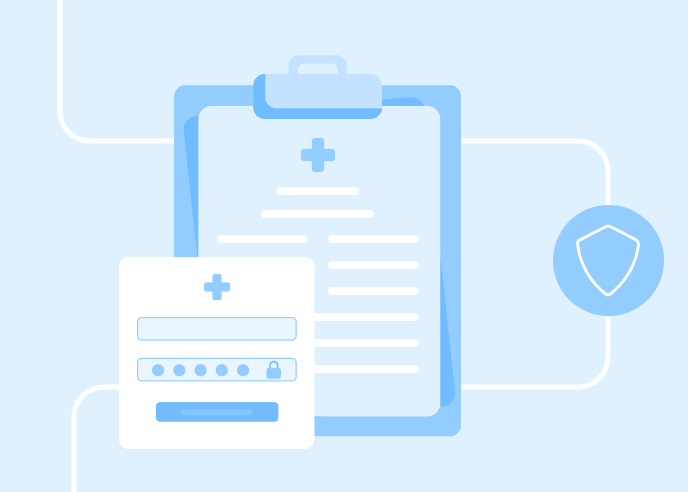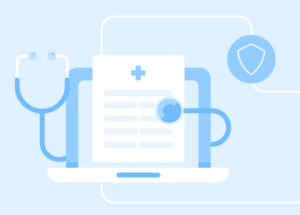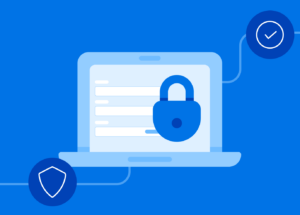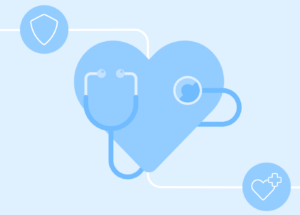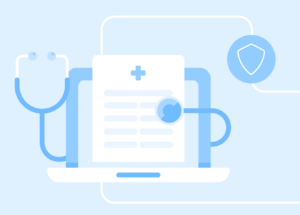First impressions count, especially in healthcare, where trust and confidence are vital to securing long-term patient satisfaction. Often, these impressions are formed before a patient even steps through your door, especially as more individuals begin their healthcare journeys online. One highly effective way to optimize a positive patient experience—and streamline your internal data collection—is by integrating easy-to-use, secure online forms into your workflow.
From simplifying patient intake processes to ensuring HIPAA compliance, web forms aren’t just a convenience; they offer long-term benefits for both patients and healthcare providers. Here’s how using customizable, secure online forms can help enhance the healthcare experience for your patients while improving your internal operations.
1. Establish Trust with Consistent, Thoughtful Design
Patients often come to healthcare providers to discuss sensitive, personal issues, some of which can be vulnerable or even scary. From the very first interaction—whether it’s browsing your website or filling out a form—it’s crucial to offer reassurance. The way your web form looks and functions can help patients feel more at ease. First impressions are often based on design: an intuitive, aesthetically pleasing, and user-friendly form makes it easier for patients to trust your organization.
The key to reassuring patients is ensuring the experience feels seamless, private, and safe. This begins with a web form that:
- Uses colors that are soothing and complement your brand’s logo, giving patients a seamless experience from the website page forward.
- Chooses legible, accessible fonts to reduce frustration during form completion.
- Use clear language that doesn’t overwhelm the patient and that engages them in a simple, personal manner. If you can say it with less, do it.
- Reduces friction by requesting only essential information, so they don’t feel burdened by long, tedious forms.
By focusing on the patient experience from the very start, you can signal trust that helps reduce the anxieties patients may feel about sharing sensitive information. A well-designed, thoughtful form that is easy to navigate can go a long way toward making patients feel understood, respected, and confident in your care.
2. Ensure Data Security and HIPAA Compliance
When patients come to you, they’re not just seeking medical care—they’re trusting you with some of their most personal and sensitive information. Their health history, medications, allergies, and potentially vulnerable diagnoses need to be treated with the utmost care. Paper forms are more easily lost, and on top of that, they’re a liability for security. See more about the hidden cost of paper forms in this blog.
To reassure patients and protect their sensitive data, switching to secure, HIPAA-compliant online forms can make a world of difference. Patients will feel more comfortable knowing that their sensitive data is encrypted and securely stored rather than being at risk of theft or misplacement. You’ll also reduce the need for patients to unnecessarily repeat themselves when answering medical questions, creating a more cohesive experience that fosters trust and smooths communication between your team and your patients.
3. Maximize Accuracy and Efficiency
As healthcare organizations, we’re responsible not only for the health of our patients but also for ensuring that every detail is accurate. If your current intake forms are filled out by hand, errors, incomplete responses, and poor handwriting can create a costly and time-consuming headache for administrative teams. More importantly, inaccurate records can negatively affect patient care.
By adopting digital processes, patients can complete them easily and quickly from any location, and you can be confident in their accuracy. Required fields, automatic data checks, and clear instructions help eliminate errors, giving you a clearer, more reliable set of information to work with. Plus, online forms reduce the workload for staff, allowing them to focus on providing quality care rather than on administrative tasks. When patients feel confident that their records will be handled accurately and that their concerns won’t be lost in translation, it increases their trust in your practice.
4. Improve Data Sharing and Communication Across Providers
Patients often see multiple specialists or need to coordinate care between various medical providers. Unfortunately, when data sharing happens via outdated methods like mail or fax, it not only wastes time, it also increases the risk of mishandling private information. This is where digital patient forms shine—reducing friction and increasing the speed at which medical information can be shared securely across departments, or connected in workflows to other actions, like emails, improving both patient experience and treatment outcomes.
Not only do HIPAA-compliant online forms make the data collection and sharing process faster and more secure, but they also provide you with the tools needed to stay organized and ensure coordination among medical professionals. When you improve data sharing internally, you give patients a more unified, well-coordinated experience in which they feel heard and cared for.
How FormAssembly Can Help
FormAssembly makes it easier than ever for healthcare organizations to secure patient data while improving the patient experience. Our Compliance Cloud solution offers a seamless, HIPAA-compliant, secure platform for managing online forms across your organization, and it integrates effortlessly with Salesforce to help streamline your data management and enhance patient engagement.
We offer a full suite of customizable medical templates:
- Patient intake forms
- Medical history forms
- Referrals and consultations
- Patient satisfaction surveys
- Vaccine registrations
- HIPAA-compliant release forms
- And much more
At FormAssembly, we understand that healthcare professionals are not just responsible for data security—they’re responsible for building long-term, trusting relationships with their patients. Reach out today for a personalized demo to learn more about how FormAssembly can help improve your data collection and streamline your patient intake processes.
To learn more about FormAssembly’s HIPAA-compliant data solutions, reach out to us for a personalized demo today.
